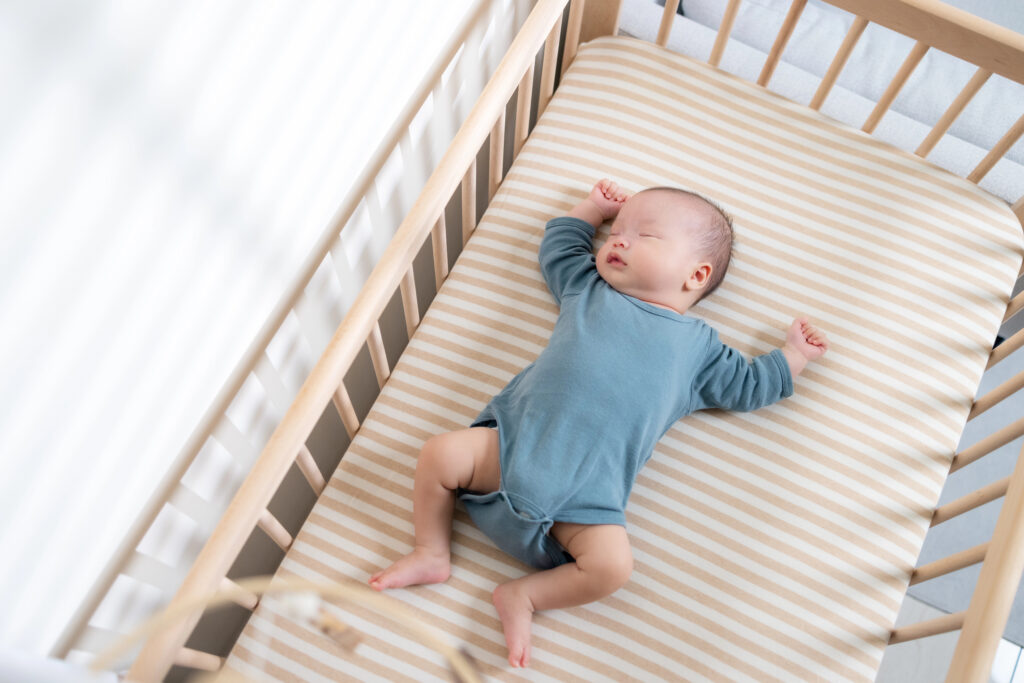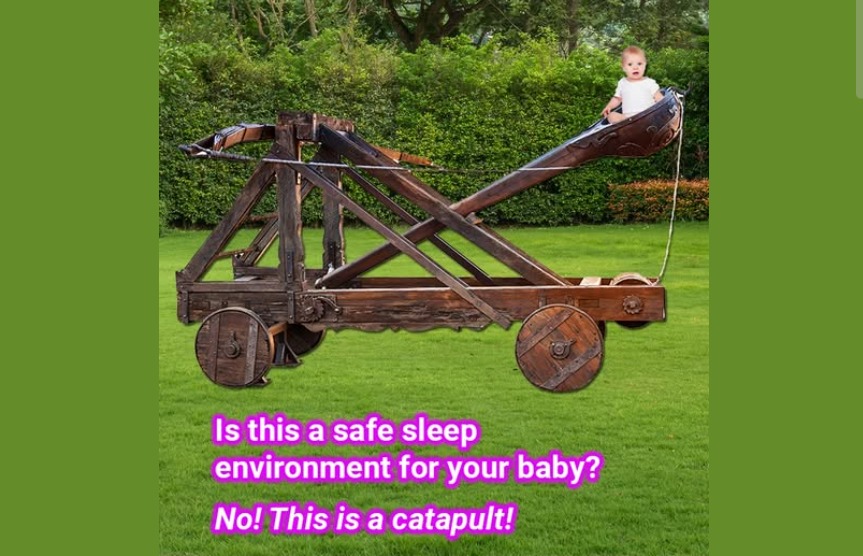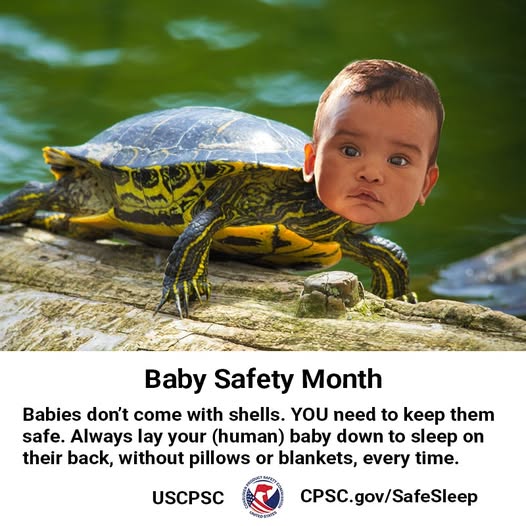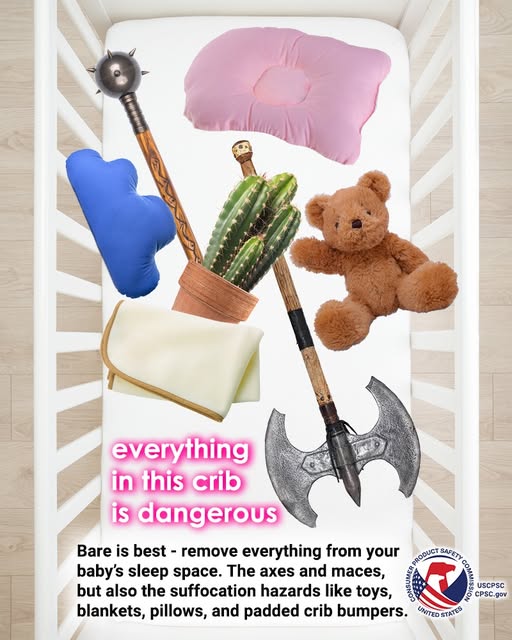
Safety standards change over the years, and parents can be too busy to keep up with the current best recommended safety practices.
It’s probably safe to say that most of us know our kids shouldn’t be snuggling cactuses or napping in a catapult. Still, the humor in the latest posts from the Consumer Product Safety Commission nonetheless draws our attention to safety standards that some parents and other caregivers may not be aware of. For instance, placing a teddy bear in the crib with your child is also not recommended.
The humor in these social media posts has the advantage of boosting their circulation compared to less-amusing informative posts, and they still make their point.
Where Should My Baby Sleep?

When the U.S. Product Safety Commission shared an image edited to show an infant sitting in the basket of a catapult, they drew a lot of attention. They added a caption:
“Always lay your baby down to sleep, flat on their back, in a crib, bassinet, play yard or bedside sleeper designed for sleep.”
Most commenters showed up to add their own jokes, like “God forbid a baby have hobbies!” and “My child slept in a trebuchet until he went to college! Let parents decide!”
The silly meme was effective in spreading a dire truth, though: while babies should not sleep in catapults or other siege weaponry, there are also much more common ways parents put babies to sleep every day without being aware of the dangers. A wide variety of baby seats, rockers, gliders, bouncers, and other products for babies can seem like lovely places for a nap, but actually pose safety risks.
In these baby containers, infants may be at risk of suffocation and falls. Therefore, babies should always be put to sleep on a firm surface with approved sleepwear that fits appropriately, and without blankets, pillows, or plush toys. There will be time for all of those when your baby is a bit older.
Turtles Shouldn’t Lie On Their Backs; Babies Should

Keeping objects out of the baby’s crib is essential, but so is the baby’s sleep position; the advice has changed significantly in the last 35 years. That means many grandparents may not be aware of the current norms and standards.
Personally, I can remember a younger sibling being put to sleep on his stomach, and my mom explaining that the doctor advised that because of the risk of choking on spit-up if he was on his back. Only a few years later, my next younger sibling slept on her side or stomach under advice from the pediatrician, because studies had shown a reduced risk of SIDS in those positions.
There was also a period when doctors often recommended placing babies on their side, using rolled receiving blankets or specially marketed foam triangles to keep them in that position.
Because these changes are relatively recent, the Consumer Product Safety Commission included it in their reminders for September’s baby safety awareness campaign. In general, babies should be placed on their backs to sleep until they are a year old, but a baby who can roll over on his own may be ready to be left in the position he chooses. Consult your pediatrician for specific advice about your baby’s safety.
Nothing In The Crib But A Firm Mattress, A Fitted Sheet, And Your Baby

An image of a baby’s crib packed with unsafe items is very attention-grabbing! The CPSC’s meme included medieval weapons and a cactus, but also showed a blanket, teddy bear, and pillows, highlighting that some dangers can look soft and cuddly.
During my first pregnancy, I recall browsing the shelves and selecting the crib bedding set I liked best. Most sets included a fitted sheet, a pretty comforter or quilt, a cute matching pillow or other soft decorative item, and a bumper. (Some also had a flat sheet and/or a crib ruffle.)
Remember crib bumpers? Nice soft padding that went all the way around the crib, tied to the rail every few slats, so that the baby didn’t bump his soft little head against the rugged wooden rails?
However, those didn’t make cribs safer. Instead, there were at least 48 infant deaths attributable to crib bumpers between 1985 and 2012, according to the University of Washington, and in 2022, the advice to avoid them escalated into a ban on the products entirely.
Pillows, plush toys, and other objects in the crib can pose similar dangers, as can poorly fitting or too-soft mattresses, loose sheets, or blankets.
The current best practices are to place the baby on his back on a firm mattress, with no toys, blankets, pillows, or decor. And, as the CPSC reminds us, no axes, maces, or cacti, either.
What’s The US CPSC All About, Anyway?
While the agency is taking time this month to promote safe sleep with cute and funny memes, its primary purpose is to help keep you and your baby safer through information and regulation of products.
The agency promotes regulations that require corporations to comply with safety standards and accurately label their products. They also maintain a running list of product recalls, so you can check in at any time and ensure the products you’re using for your children are safe.
The agency is also an excellent source for the latest research and reports so that you can keep up with sports safety regulations and recommendations, potential risks of baby products (even if they haven’t been recalled or regulated), and other safety information from grocery carts to space heaters to products that protect children from injury by falling furniture.

